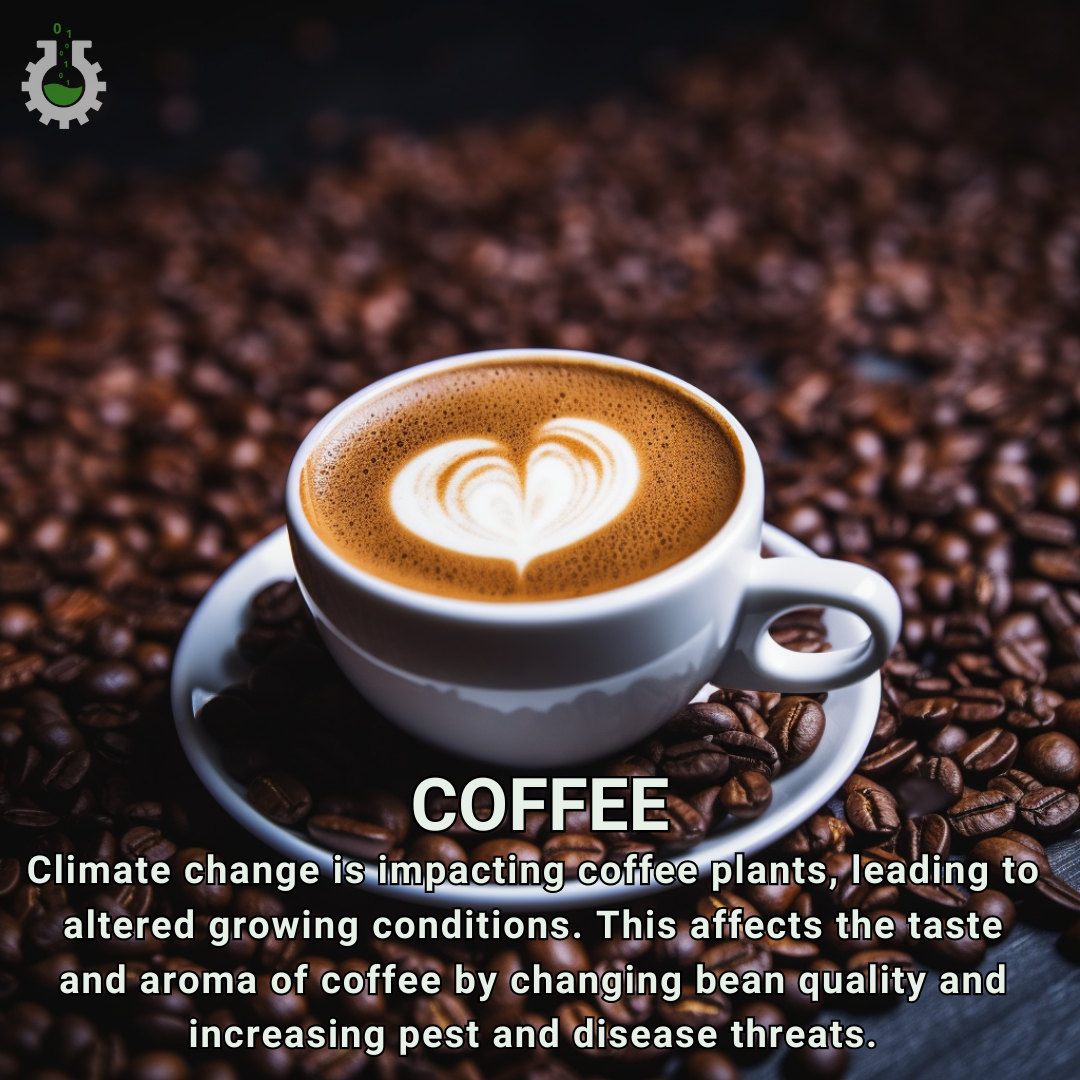May 23, 2024
Climate Change Poster Collection of the Day – Coffee
Book a Demo
Today’s Climate Change Poster Collection highlights Coffee. Climate change is not just an abstract concept or a distant future threat; it’s a reality that’s already affecting many aspects of our daily lives, including the beloved ritual of drinking coffee. The delicate balance of temperature, rainfall, and soil conditions that coffee plants require to produce their best beans is being disrupted by the increasing unpredictability of weather patterns. As global temperatures rise, coffee-growing regions are experiencing more frequent and severe droughts, erratic rainfall, and increased incidences of pests and diseases. These environmental stresses are altering the metabolic processes of coffee plants, leading to changes in the chemical composition of the beans. The result is a noticeable shift in the taste and aroma profile of coffee, which aficionados around the world are beginning to detect. Traditionally rich and complex flavors are giving way to more muted and inconsistent profiles, and the aromatic compounds that contribute to the distinctive scents of coffee are also being affected. This transformation is not just a matter of personal preference; it has significant economic implications for coffee farmers, many of whom are already struggling to adapt to the changing conditions. In regions like Central and South America, Africa, and Southeast Asia, where coffee cultivation is a major source of livelihood, the stakes are particularly high. Farmers are being forced to invest in new technologies, diversify their crops, or even relocate their farms to higher altitudes where the climate is more conducive to coffee growing. However, these solutions are not always feasible or sustainable in the long term. As the global coffee industry grapples with these challenges, consumers are also becoming more aware of the environmental impact of their coffee habits, leading to a growing demand for sustainably sourced and climate-resilient coffee varieties.
In this interconnected world, the fate of coffee is a poignant reminder of the broader consequences of climate change and the urgent need for collective action to mitigate its effects. As the climate continues to shift, the areas suitable for coffee cultivation are expected to shrink, forcing farmers to adapt in ways that may not always preserve the quality of the beans. For instance, higher temperatures can accelerate the ripening process of coffee cherries, resulting in beans that are less dense and have lower acidity, which are key determinants of flavor. Moreover, the increased prevalence of pests like the coffee berry borer and diseases such as coffee leaf rust further complicate the situation. These pests and diseases thrive in warmer conditions, and their spread can devastate coffee crops, leading to significant economic losses for farmers and reduced availability of high-quality coffee for consumers. The economic ripple effects extend beyond the farms to the entire supply chain, affecting exporters, roasters, and retailers. In response to these challenges, researchers and agricultural experts are working on developing climate-resilient coffee varieties that can withstand higher temperatures and resist pests and diseases. These efforts include crossbreeding different coffee species and utilizing advanced agricultural techniques. However, these innovations take time to develop and implement, and there is no guarantee that they will fully compensate for the adverse effects of climate change.
Additionally, the shift in coffee-growing regions could have profound social and cultural implications. Coffee farming is deeply embedded in the traditions and economies of many communities, and changes in cultivation practices or the need to relocate farms could disrupt these established ways of life. The loss of traditional coffee-growing areas can also lead to the erosion of biodiversity, as certain coffee varieties may become extinct or less prevalent. This biodiversity is crucial not only for maintaining the unique flavors and aromas of different coffee types but also for the overall health of the ecosystem. As consumers, we can play a role in supporting sustainable coffee practices by choosing to buy coffee that is certified by organizations like Fair Trade and Rainforest Alliance, which promote environmentally friendly and socially responsible farming methods. By doing so, we can help ensure that coffee farmers receive fair compensation for their efforts and that the coffee we enjoy is produced in a way that minimizes environmental impact.
Furthermore, the coffee industry itself is taking steps to address these challenges. Many companies are investing in sustainability initiatives, such as reducing their carbon footprint, supporting reforestation projects, and working directly with farmers to implement climate-smart agricultural practices. These efforts are critical not only for the future of coffee but also for the broader fight against climate change. However, the scale of the problem requires more than just industry efforts; it calls for coordinated global action. Policymakers, businesses, and consumers must work together to reduce greenhouse gas emissions, protect natural habitats, and promote sustainable land use practices.
Ultimately, the story of coffee in the age of climate change is a microcosm of the broader environmental challenges we face. It underscores the interconnectedness of our global ecosystem and the need for collective action to address the root causes of climate change. Whether through individual choices or collective policy efforts, we all have a role to play in preserving the future of coffee and the planet. The journey of coffee from seed to cup is a testament to human ingenuity and the beauty of nature, and it is our responsibility to ensure that this journey can continue for generations to come. By taking action now, we can help protect not only the future of coffee but also the health and well-being of our planet.
Discover an inspiring collection of climate change poster.



